5. ligand substitution
1/31
There's no tags or description
Looks like no tags are added yet.
Name | Mastery | Learn | Test | Matching | Spaced |
|---|
No study sessions yet.
32 Terms
ligand substitution
ligands can be swapped for another ligand causing a colour change
similar sized ligands
H2O and NH3
similar sized ligands do not change coordination number of complexes
or the complex shape
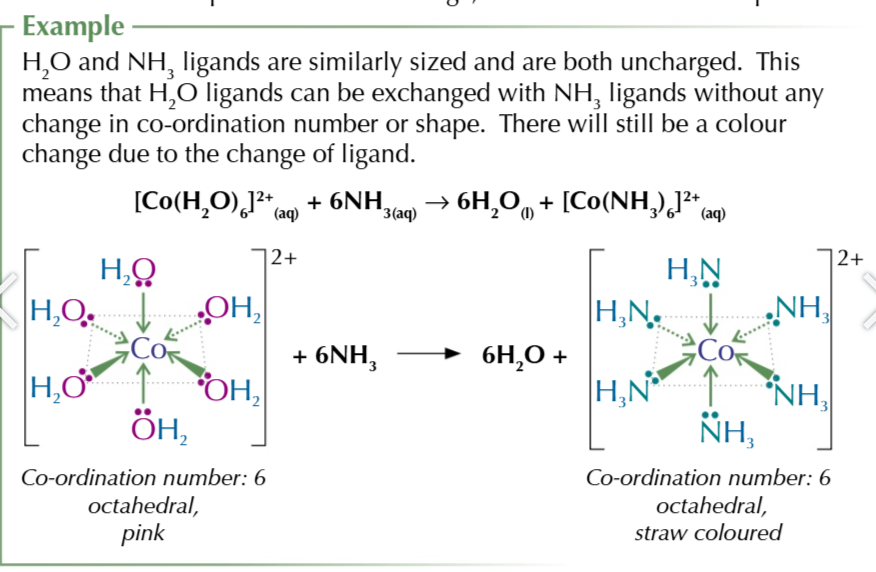
Cl ligand is larger than H2O and NH3
substitution H2O/NH3 for Cl would change the coordination number and shape
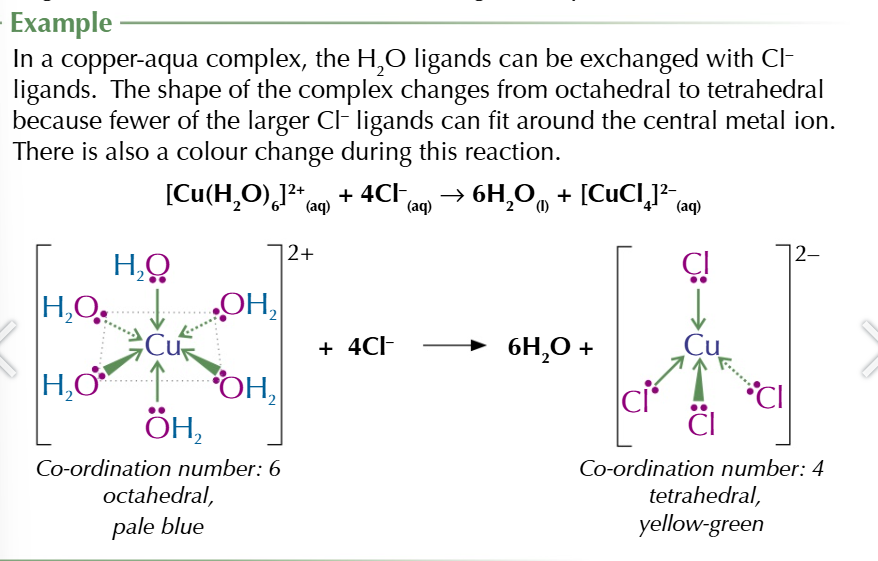
partial substitution of ligands
sometimes not all 6 of H2O ligands are substituted

haemoglobin
a protein found in blood that helps transport oxygen around the body
haemoglobin contains Fe2+ ions which are hexa-co-ordinated
6 lone pairs are donated to them to form 6 coordinate bonds
4 of the lone pairs come from nitrogen atoms which form a circle around the Fe2+
this part of the molecule is called haem
porphyrin
the molecule that the four nitrogen atoms are a part of is called a mulidentate ligand
a protein called globin and either an oxygen or water molecule also binds to Fe2+ ion to form an octahedral structure
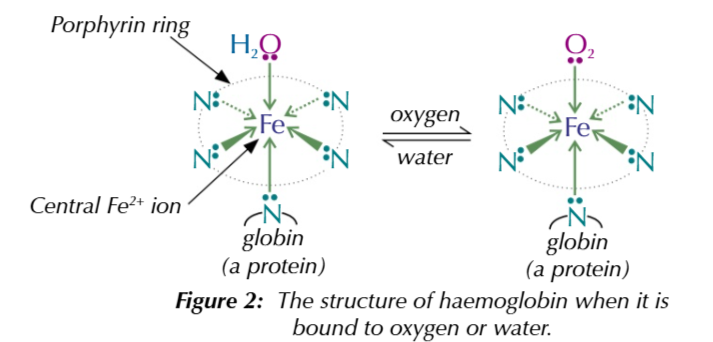
both water and oxygen will bind to Fe2+ ions as ligands
so the complex can transport oxygen to where its needed then swap it for a water molecule
in the lungs where oxygen concentration is high
water ligands are substituted for oxygen molecules to form oxyhaemoglobin and then transported around the body
when oxyhaemoglobin gets to places where oxygen is needed
the oxygen molecules are exchanged for water molecules
haemoglobin then returns to the lungs
and the whole process repeats
inhaled carbon monoxide can substitute water molecules on haemoglobin
forming carboxyhaemoglobin
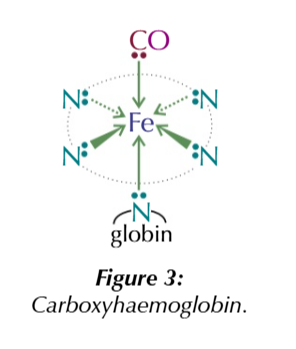
carbon monoxide forms a very strong bond with the Fe2+ ion and doesnt readily exchange with oxygen or water ligands
meaning the haemoglobin cant transport oxygen anymore
carbon monoxide poisoning starves the organs of oxygen causing
headaches
dizziness
unconsciousness
death if not treated
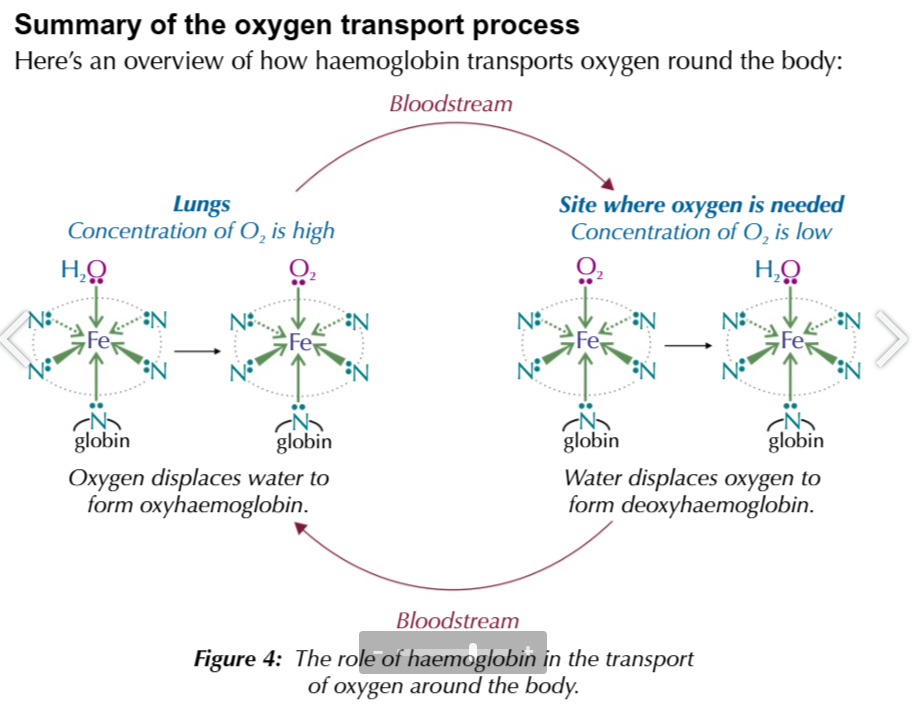
ligan exchange reactions can be easily reversed
unless the new complex ion is much more stable than the old one
if the new ligands form stronger bonds with central metal ions than the old ligands
the change is less easy to reverse

multidentate ligands like EDTA+ form more stable complexes than monodentate ligands
ligand exchange reactions involving bidentate ligands and multidentate ligands are hard to reverse

when ligand exchange reactions occur
bonds are broken and formed
the strength of the bonds being broken is often similar to the strength of the new bonds formed
so the enthalpy change for a ligand exchange reaction is usually very small
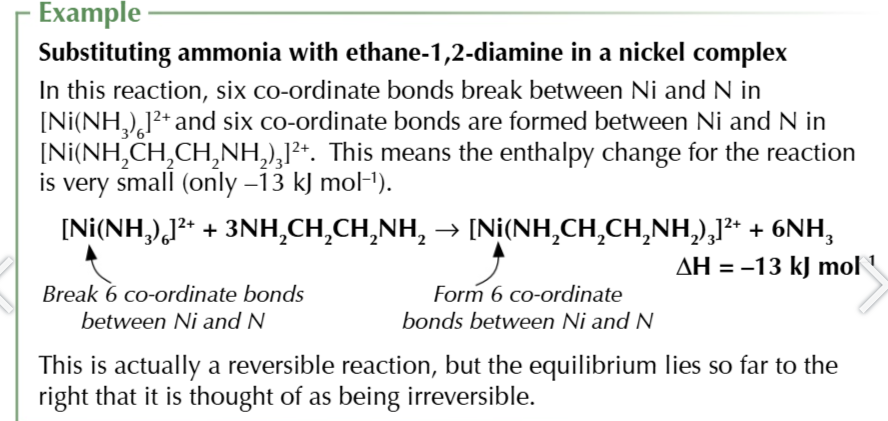
when monodentate ligands are substituted with bidentate or multidentate ligands
the number of particles increases, more particles increase the enthropy
reactiosn that result in an increase in entropy are more likely to occur
this is why multidentate ligands always form much more stable complexes than monodentate ligands AKA CHELATE EFFECT

when the hexadentate ligand EDTA+ replaces monodentate or bidentate ligands
the complex formed is loads more stable
its difficult to reverse these reactions
because reversing them would decrease the systems enthropy